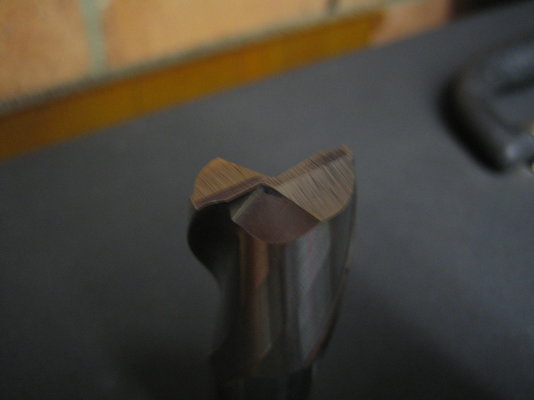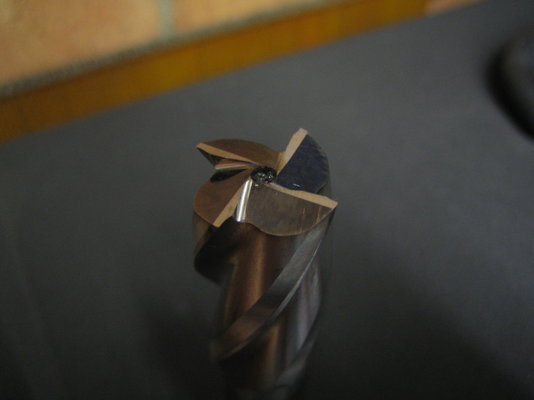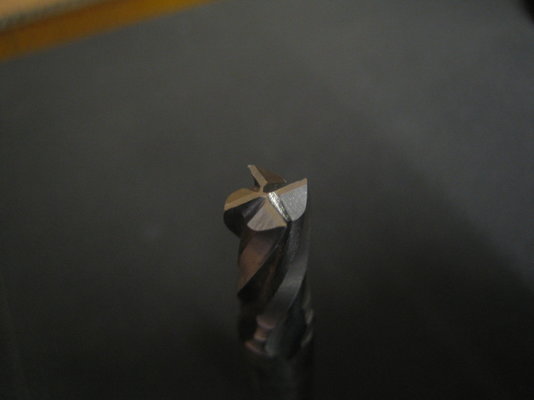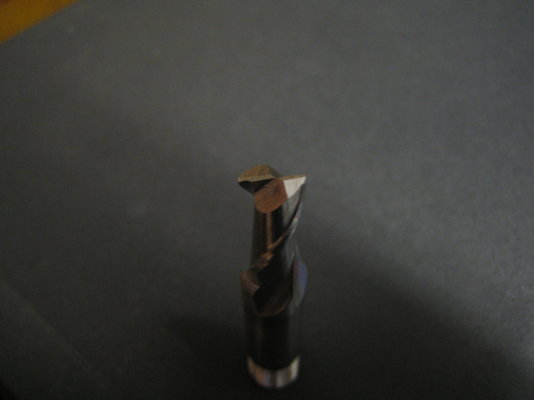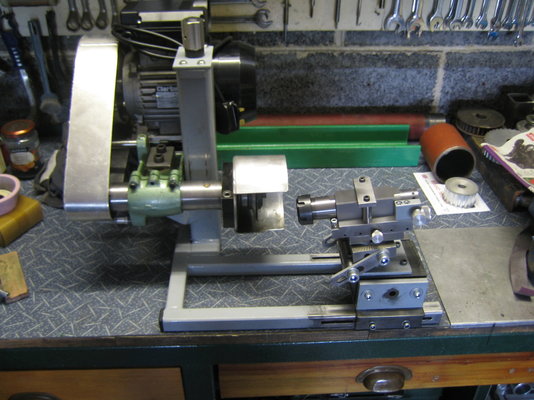Pete.
Member
- Messages
- 14,383
- Location
- Kent, UK
I got a pile of end mills and slot drills of which probably there were 1/3 scrap 1/3 ready to use and the remainder in need of sharpening. I have a Clarkson tool and cutter grinder but never got any collets with it so I figured I would use what I have and make an adapter for R8 milling collets which I have a fair few of.
So I got a piece of steel, bored it to .950" and turned a taper in the front for the collets. This is 1.5" OD to fit the Clarkson work head I already had. The retaining coller comes off the original sleeve that came with the tilting head.

I had an ally disk that came off a stepper motor which had 8 index holes in it, so I decided to use that as a basic indexer. I bored the back of it to clamp the R8 collet.

One of the tooth rests acts as a stop and a close-fitting drill bit as an indexing pin.

And that's it - ready to sharpen end mills. I read up on clearance angles atc and got sharpening. These are staged photos BTW I always have the guard fitted.

Here's a typical end mill that's been used too fast. The tips are scorched but most of the cutter is fine.

A quick go-around on the primary and secondary angles and now it's so sharp you have to be careful how you handle it.

Now to protect these nice cutting edges.Following Andrew Mawson's idea I bought a 0.5L deep fat fryer off eBay:

And a couple of bars of Crocell.

Melted the Crocell in the fryer and used it to coat all my newly-sharpened cutters. A tip here - slice the Crocell up into little flakes or you'll burn the first bits and fill your workshop with smoke


So I got a piece of steel, bored it to .950" and turned a taper in the front for the collets. This is 1.5" OD to fit the Clarkson work head I already had. The retaining coller comes off the original sleeve that came with the tilting head.
I had an ally disk that came off a stepper motor which had 8 index holes in it, so I decided to use that as a basic indexer. I bored the back of it to clamp the R8 collet.
One of the tooth rests acts as a stop and a close-fitting drill bit as an indexing pin.
And that's it - ready to sharpen end mills. I read up on clearance angles atc and got sharpening. These are staged photos BTW I always have the guard fitted.
Here's a typical end mill that's been used too fast. The tips are scorched but most of the cutter is fine.
A quick go-around on the primary and secondary angles and now it's so sharp you have to be careful how you handle it.
Now to protect these nice cutting edges.Following Andrew Mawson's idea I bought a 0.5L deep fat fryer off eBay:
And a couple of bars of Crocell.
Melted the Crocell in the fryer and used it to coat all my newly-sharpened cutters. A tip here - slice the Crocell up into little flakes or you'll burn the first bits and fill your workshop with smoke









 . Better tell her she can buy a new one
. Better tell her she can buy a new one
